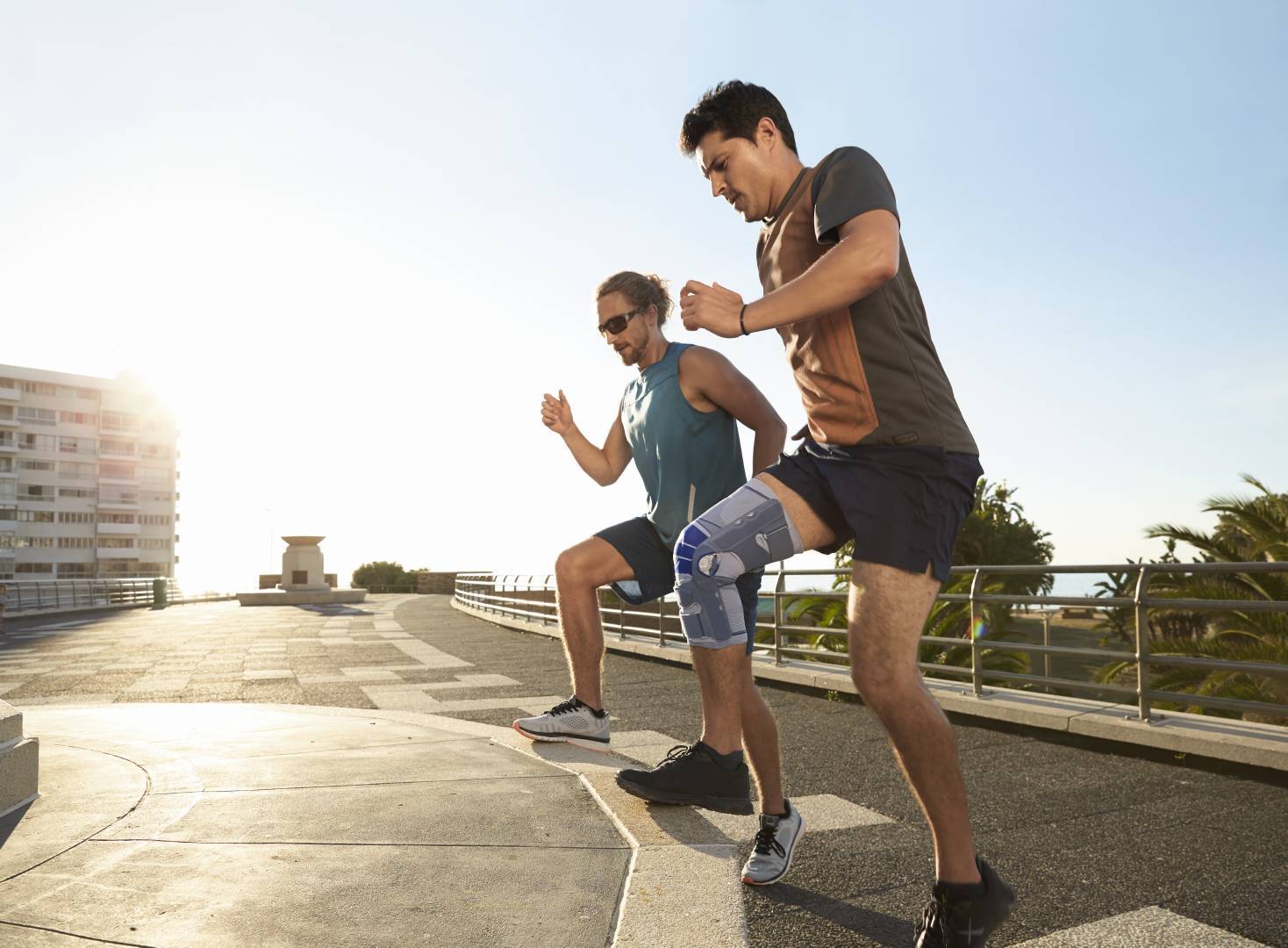The Step Down Then Back is a modified version of the step up. Incorporating it into a rehab routine can help get your knee back into working order following an injury. Remember, for the exercise to be effective (and not worsen the injury!), it’s vital to do it right and with your physio’s go-ahead. So, without further ado, here are the benefits of the Step Down and Back for the injured knee and how to do the exercise properly.
BENEFITS OF STEP DOWN THEN BACK
This exercise is low-intensity and activates important muscle groups around your knee, including the quads and hamstrings. As you shift between each touchdown, your knee stabilisers (quadriceps femoris, extensor retinaculum, poplietus, etc) kick in to support and control the movement.
So, although it may “feel” like it’s not doing much, it’s an excellent exercise to get an injured knee ready to move again.
HOW TO DO THE STEP DOWN THEN BACK
Note: your support leg is the one you stand on and the one that’s injured. Your free leg is the one you touch down with.
- Stand on an exercise step or box measuring approximately 15cm tall.
- Shift your weight onto your support leg.
- Step forward and touch down with the free foot, but do not transfer weight. Bend the knee of your support leg as you step forward.
- Step up and then back, touching down behind you with the free foot.
- Straighten the knee of your support leg when you step up and bend it again when you touch down.
- One forward and backward step counts as a single repetition. Perform all movements in a controlled fashion.
- Relax and repeat as your ability allows.
THE IMPORTANCE OF EXERCISE FOR INJURY REHABILITATION
For many people, the most frustrating part of an injury or surgery is the disruption to their regular exercise routine. And although it may seem that resting the affected area will protect it, it’s not always the case.
In most cases, clinicians recommend rehabilitation exercises and range of motion therapy to assist in a speedy recovery. That’s because exercise will maintain the muscle strength needed to protect the joint in the future, boost circulation to affected tissues, and even reduce pain through endorphins.
Deconditioning or a decrease in muscle strength occurs almost immediately after an acute injury. When there is a chronic condition, the muscle loss can be gradual. The decrease in strength is due to the reduction in tissue tolerance - the ability of the muscles and soft tissues to withstand the load of the activity, which can result in pain or further injury.
Hence, it’s essential to keep moving after injury and work with your physio to create an exercise routine supporting your rehabilitation.
Support your step downs
If you are recovering from a knee injury, the GenuTrain knee brace can help your rehab performance by providing medical-grade compression and stability.
- The patella pad relieves pain
- Compression reduces the rate of muscle fatigue
- It improves your awareness of how you activate your leg muscles
- And it helps protect the knee
If you require assistance selecting the right product for your needs or wearing the brace, call us on 098015660 or contact us via live chat.
Do you have private health? Most private health extras will cover Bauerfeind Products. Check to see if yours is included. Bauerfeind Private Health Insurance Inquiry.
This information is provided for general information purposes and should not be relied on as a substitute for medical advice, evaluation or care from a qualified and licensed healthcare provider. The information contained here should not be considered a plan of care or physical therapy.
















